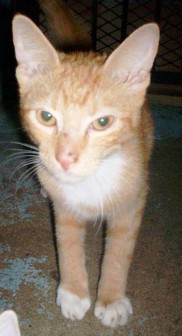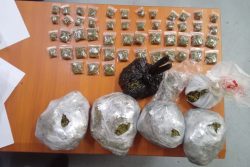Continued from last week
Allow me to begin today’s column by correcting an omission from last week’s Pet Corner. When writing about asthma and chronic allergic bronchitis, I should have mentioned that companion animals living in the same environment with a person who is addicted to cigarettes (‘smokaholic’) could very well develop respiratory distress, because of the constant inhalation of second-hand smoke. Similarly, a dog/cat (and humans), living under continuous conditions in which the smoke from the burning of trash/garbage finds itself in the pet’s environment, can experience severe breathing problems.
 Also, it should have been mentioned that anti-allergy medication might have to be factored into the therapeutic regime of these ailments; but your vet will advise you accordingly.
Also, it should have been mentioned that anti-allergy medication might have to be factored into the therapeutic regime of these ailments; but your vet will advise you accordingly.
Kennel cough (KC)
This is a very contagious disease that affects the upper airways of the respiratory tract. The correct scientific name is infectious tracheobronchitis. This means that the windpipe (trachea) and the small airway tubes (bronchi) are attacked. This ailment spreads rapidly, especially when animals are confined in a relatively small area, eg, in a kennel. That’s why it is called kennel cough.
Cause

The causative agents are usually viruses. The canine parainfluenza virus, or the canine adenovirus 2 or also the distemper virus could be the primary (even the only) pathogenic agent involved. Some scientists have tried to implicate other viruses (eg, canine reoviruses) in this malady, but the consensus of scientific opinion is that these latter types are of questionable significance in this particular disease. Also, I should mention that even bacteria have been isolated in KC infected dogs, but these bacteria are coincidental and not of primary importance. However, their presence, even as secondary invaders, would tend to exaggerate and perpetuate the problem.
Generally speaking, in light infections and even if there is no veterinary intervention, the KC seems to limit itself. However, one should not take the chance of not giving this ailment the serious attention it deserves. On several occasions, we have noticed that KC can progress to a bronchopneumonia (even fatal) in puppies and to pneumonia in adult dogs, especially if their health status is compromised or the dog’s condition is weakened for whatever reason. Stress and extremes of ventilation, temperature and humidity, as well as poor nutrition, tend to increase the susceptibility to and severity of the ailment.
Symptoms
The most prominent sign is a fit of a harsh, dry coughing. Such outbreaks can be followed by episodes of retching and gagging. Affected dogs may pick at their food, or go off it completely. If the condition gets worse, then we will expect a fever and a ‘cold’ (pussy slime oozing from the nostrils) to develop. The dog would also show signs of listlessness. The coughing attacks become more frequent. At this stage, the animals, especially puppies, are very vulnerable to other diseases, such as distemper. Puppies and yoy breeds (Pekinese, Pugs, etc) with easily blocked up nostrils have difficulty in breathing; the narrow, underdeveloped airways are more susceptible to obstruction by thick secretions.
To be continued
Please implement disease preventative measures (vaccinations, routine dewormings, monthly anti-heartworm medication, etc) and adopt-a-pet from the GSPCA’s Animal Clinic and Shelter at Robb Street and Orange Walk, if you have the wherewithal to care well for the animals. Do not stray your unwanted pets, take them to the GSPCA’s Clinic and Shelter instead. If you do not wish your pet to have puppies or kittens, you may exploit the GSPCA’s free spay and neutering programme. If you see anyone being cruel to an animal, or if you need any technical information, please get in touch with the Clinic and Shelter by calling 226-4237.








